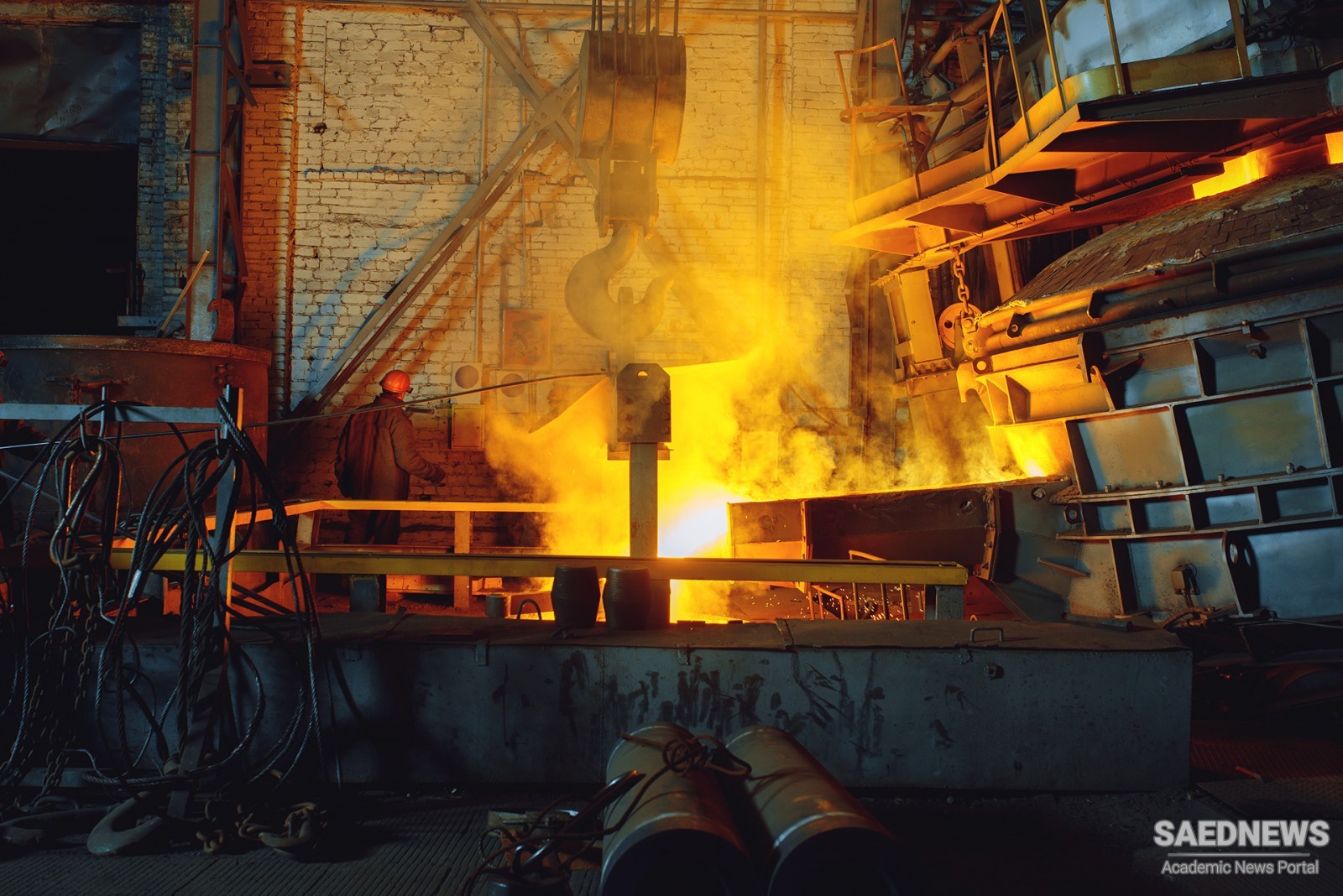He noticed that every furnace which was blown out for repair had altered its shape. It was no longer square, but roughly round. In 1832, Gibbons built a furnace which had a round hearth from the start. The new furnace was run alongside a traditional one, using the same raw materials and with all other conditions unaltered, and made 100 tonnes of iron a week, then a record. The old furnace, which was for the time a big one, could only make 75 tonnes.
The most important development in the blast furnace was the use of waste gas. A blast furnace makes large quantities of inflammable gas as a result of the ironmaking reactions. This gas came out at the top and burned away. Any area which had a number of blast furnaces was very impressive at night, with every furnace giving out great flames three or four metres (10–13ft) long. If the gas could be trapped and taken down to ground level, it could be burned there under steam boilers or to heat the air blast. However, the top of the blast furnace, where the gas vented, was also the place where the raw materials went in. It had to be open for this purpose, and charging of raw materials carried on day and night. As early as 1834 an idea was tried for collecting the gas on a furnace at Wednesbury, Staffordshire, but it was not a success and nor were several other attempts.
In 1850, G.Parry, of Ebbw Vale, produced a device known as the bell and hopper (or cup and cone) which is found in modified form on most blast furnaces today. Parry fixed at the top of the furnace a large cast-iron hopper, roughly funnel-shaped, with the narrow neck facing down into the furnace. Raw materials tipped into this hopper fell down into the furnace in the normal way. To close the hole in the hopper when raw materials were not being tipped, a cast iron ‘bell’ was fitted inside it and connected to a lever by which it could be raised or lowered. When it was raised, the bell sealed off the hopper completely and no gas could escape. When it was lowered, the gap between it and the hopper allowed the raw materials to enter the furnace.
To collect the gas a large pipe was fixed in the side of the furnace, just below the top. It led down to ground level where it branched off into smaller pipes to feed the gas to steam boilers and to stoves to heat the blast. Although some of the gas was lost when the bell was lowered, the greater part was made available as fuel, bringing marked improvements in economical working.
Parry’s idea is, in essence, still in use today although a modern furnace has two bells and hoppers, one above the other to prevent loss of gas. The top bell is opened and the raw materials fall on the lower one, which is closed and sealing the furnace. Then the top bell is closed and the bottom one opened, while the top bell does the sealing. Another design, the bell-less top, using two hoppers with valves, is now beginning to supersede the double bell top.
By the middle of the nineteenth century iron was at its peak. Cast iron has many uses, but wrought iron was still the most important form of the metal and by far the most important metal of commerce. Not only was there a better method of making it—Hall’s process—there were several improved ways of processing it by rolling and forging. And the market was still expanding.


 The Blast Furnace: Emerging Metal Tools
The Blast Furnace: Emerging Metal Tools














































